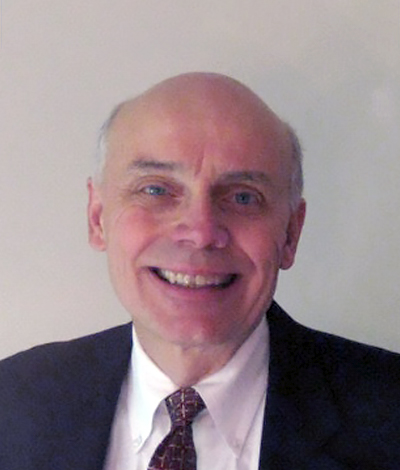SC 01: Capacity Building and Training on Geologic Carbon Dioxide Storage Resource Assessments
Tuesday, 21 May 2024, 8:00 a.m.–5:00 p.m. | Rio de Janeiro, Brazil
Course Content
Carbon dioxide capture and storage (CCS) is one of the key approaches to reducing CO2 emissions from the energy and industrial sectors. Having a clear understanding of geologic CO2 storage resources across multiple basins is important for national and regional planning purposes. Using a method that honors geologic heterogeneity and has been tested in a wide variety of sedimentary basins and geologic settings is important for estimating those storage resources.
The U.S. Geological Survey’s CO2 storage resource assessment methodology was used to estimate the storage resources of the entire United States and can be used in any setting anywhere in the world. The results can be directly compared to the U.S. storage resources and to understand similar resources in international settings.
The objective of the short course is to provide in-depth training on the USGS CO2 storage assessment methodology and how to proceed with an assessment. The course is designed for geoscientists responsible for estimating geologic CO2 storage resources.
Topics to be covered during the course include:
- Introduction to Geologic CO2 Storage
- CO2 Storage Options and Trapping Mechanisms
- Overview of Existing CO2 Storage Assessment Methodologies
- CO2 Storage Assessment Process
- Identification and Selection of Suitable CO2 Storage Sites
Schedule:
| 08:00 | Registration |
| 08:30 | Introductions and Discussion of Levels of Expertise and Interests |
| 09:00 | Overview of Course, Content and Goals - Storage Targets
- Sealing Formations
- Injection and Migration of CO2
- Trapping Mechanisms
|
| 09:30 | Overview of Existing CO2 Storage Assessment Concepts, Types, and Comparisons - Static capacity
- Dynamic capacity
- Society for Petroleum Engineers (SPE) CO2 Storage Resources Management System
- Oil and Gas Climate Initiative (OGCI) CO2 Storage Resource Catalogue
- Global CCS Institute – Global Status of CCS 2022
|
| 10:20-10:40 | Morning break |
| 10:40 | Discussion of Uncertainty: How to Quantify, Reasoning for Probabilistic Methods
USGS CO2 Storage Assessment Concepts (See Brennan Et Al., 2010; Blondes Et Al., 2013) - Regional Seal
- Storage Formation
- Storage Assessment Unit (SAU)
- Pore Volume Calculation
- Estimation of Buoyant Storage Volume
- Estimation of Density
- Estimation of Storage Efficiency (See Brennan, 2014)
- Calculation of Technically Accessible Storage Resource (TASR)
|
| 11:30 | Group Exercise |
| 12:00-13:00 | Lunch |
| 13:00 | Description of Initial Steps in the USGS Assessment Process: - Underlying Base Data Requirements to Establish Initial Basin / Formation Capacity Estimate
- Identification of Potential Storage Formations in Basin
- Process of Evaluating if Those Formations Can Be Part of an SAU
- Identification of SAU Outline Based on Structural Maps and Isopachs of the Storage and Sealing Formations
- Concept of Net Porous Thickness
- Introduction to Input Forms
- Estimation of the Mean, and the Uncertainty of the Mean
- Calculation of Area, Thickness, Net Porous Thickness, Porosity, Perm, Etc.
- Discussion of Assessment Flow Chart
|
| 14:00 | Review of USGS CO2 Storage Resource Assessment Calculator - Input Parameters
- Thermodynamic Input Parameters
- Thermodynamic Output Parameters
- Volumetric Input Parameters
- Buoyant Trapping Pore Volume Z Factor
- Permeability Z Factor
- Assessment Form Templet
- Probabilistic Distributions
- Aggregation
|
| 14:50-15:10 | Afternoon Break |
| 15:10 | Example Basin Assessment - Assessment Group Discussions
- Basin Geology and Determination of SAU Boundaries
- Determination of Input Parameters
- Using the Storage Resource Assessment Calculator
- Discussion of Results
|
| 16:45 | Course Summary |
| 17:00 | Adjourn |
Instructors
Peter Warwick

Peter Warwick is the Science Advisor for the Energy Resources Program at the U.S. Geological Survey. His scientific and technical specialties include sedimentology, stratigraphy, subsurface geology, and geologic carbon and energy storage. His research has focused on carbon utilization, energy exploration, and resource assessments in various sedimentary basins worldwide.
Sean Brennan

Sean Brennan is co-project lead for the Carbon and Energy Storage, Emissions, and Economics Project at the U.S. Geological Survey. His main areas of expertise include sedimentology, stratigraphy, low-temperature geochemistry, and subsurface fluid systematics. His research has focused on assessing non-energy gases in the subsurface, creating assessment methodologies and completing assessments of subsurface fluid resources, and working to understand the creation, migration, and entrapment of various naturally occurring fluids.
- Professional Registration Fee:
- $200 USD
- Register during conference registration
- Registration Fee Includes:
- Course Materials and Coffee Breaks
- Attendee Limit
- 30 People
Venue

JW Marriott Hotel - Copacabana
Av. Atlântica, 2600 - Copacabana
Rio de Janeiro,
Rio de Janeiro
22041-001
Brazil
Accommodation information is not yet available for this event. Please check back often.